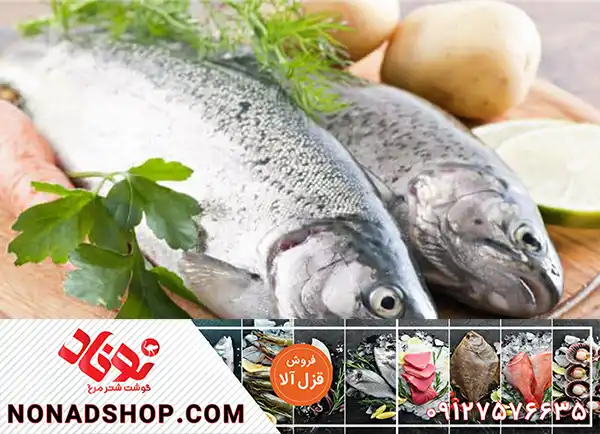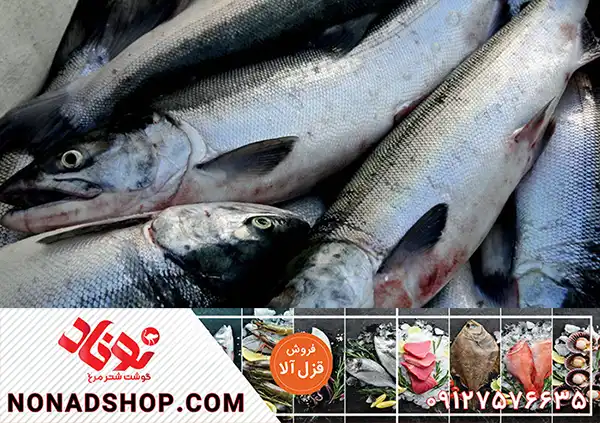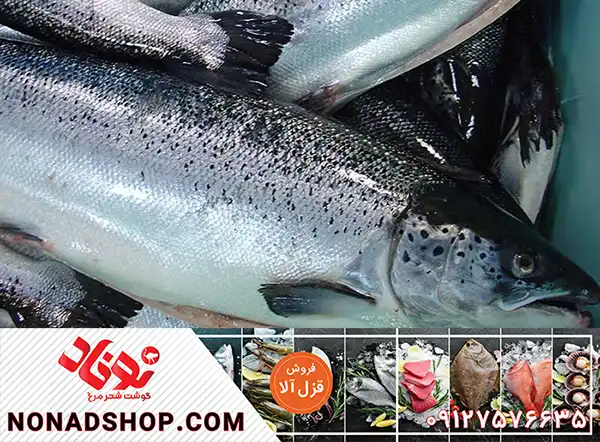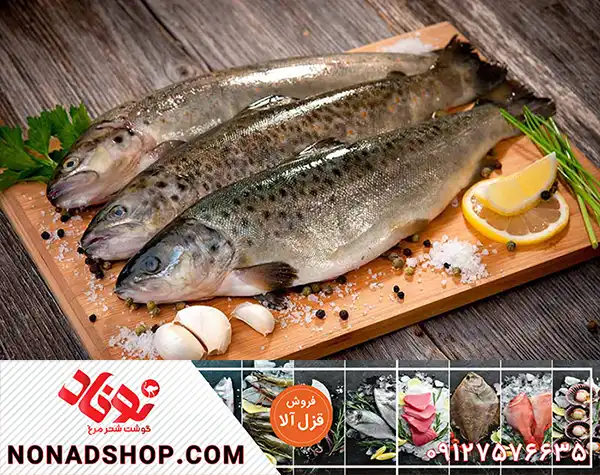
Fished or farmed: Life cycle impacts of salmon consumer decisions and opportunities for reducing impacts
Salmon is a nutritious and popular food among consumers predominantly in wealthy countries around the world. Since the mid-1990s farmed salmon production has exceeded wild salmon harvest, and is now 80 % of total global salmon supply. The environmental impacts of farmed salmon are frequently discussed and consumers are faced with a multitude of choices even after deciding to have salmon for dinner: species, production method, origin, product form. We present life cycle impacts of fresh and frozen salmon products, originating in purse seine fisheries for pink salmon and gill net fisheries for sockeye salmon in Alaska, when sold on markets in Europe and the United States. Norwegian salmon products are then modelled to the same markets in fresh and frozen form, based on literature data. Impact categories included were greenhouse gas emissions, marine eutrophication, marine ecotoxicity and land use. A fish in, fish out ratio is also calculated and differences in content of nutrients and contaminants described. Frozen products from wild sockeye and pink salmon had the lowest emissions in both markets. For consumers in the U.S. and Europe, wild salmon products have 46–86 % and 12–71 % lower greenhouse gas emissions than farmed Norwegian salmon, respectively, depending on species and product form. Farmed salmon also had higher land use, marine ecotoxic and eutrophying emissions and fish in, fish out ratio. Important differences exist in nutritional and contaminant content between the three types of salmon production. Improvement options as well as an optimized supply chain are modelled showing greenhouse gas reduction opportunities of 40–50 % also for the best performing chains. Results can be used as a baseline for improved data collection and emission reductions. Recommendations for consumers, industry and policymakers who can facilitate and even drive development towards more sustainable salmon products are provided.
Introduction
Due to their taste, convenient use and high nutritional content, salmon products are highly appreciated among consumers around the world. Salmon is a broad segment of seafood comprising many species originating in widely different fisheries and aquaculture production systems (Philis et al., 2019; Pelletier et al., 2009). While global salmon aquaculture has increased and continues to grow dramatically (Fig. 1), there are also important capture fisheries targeting various salmonid species, almost exclusively in the North Pacific. Since the mid-1990s, aquaculture dominates global salmon production in volume (Fig. 1) and in 2019 about 20 % of global salmonid production was wild-caught. The dominating species in culture is Atlantic salmon (Salmo salar), which in 2019 constituted roughly 70 % of farmed salmonids worldwide in volume, followed by Rainbow trout
Wild Pacific salmon are found throughout the North Pacific, but Russia, the U.S. and Japan dominate the volume harvested (Table 1). These fisheries together land around one million tonnes of salmonids every year (Fig. 1) processed to fresh, frozen, canned and otherwise processed salmon products which are traded around the world. Japanese harvest is almost exclusively chum salmon (Oncorhynchus keta) raised in hatcheries early in their life, then released into the ocean. A significant portion of Alaskan and Russian production of pink salmon (Oncorhynchus gorbuscha) is also initially reared in hatcheries. Because salmon return to their natal rivers, most salmon are caught near the home rivers as the fish come to spawn. In the U.S., they are predominantly caught by gill net and purse seine, but in Russia fish traps are extensively used. U.S. Pacific salmon fisheries are dominated by pink salmon in volume and sockeye salmon (Oncorhynchus nerka) in landing value. Global landing volumes of wild caught salmonid species
The three main species, pink, chum and sockeye have all seen major increases in abundance since the early 1970s, an increase generally ascribed to changes in ocean conditions (Hare and Mantua, 2000), but certainly also impacted by increasing hatchery production of chum and pink salmon (Naish et al., 2008). Overall, it is currently thought that each of these species are now at higher abundance than at any time in recorded history, although some individual stocks of each species have been in decline.
Apparent consumption (i.e. production plus imports minus exports) of salmon in the EU has increased by 30 % since 2010 and in 2019 it was the second most commonly consumed seafood type after tuna (EUMOFA, 2021). In 2020, the EU, the world’s largest seafood market, imported just over one million metric tonnes of salmonids, which is around 20 % of global production (EUMOFA, 2021). In 2017, EU production of farmed salmonids was around 500,000 tonnes (with 40 % of that volume being farmed by the UK who since has left the EU) and EU fisheries landings of salmonids were <7000 tonnes. The EU self-sufficiency rate for salmonids was then estimated to be 30 % (EC, 2020) and due to the UK leaving, it is today considerably lower. The demand can hence by no means be met by European wild salmon stocks, many of which (e.g. in the Baltic Sea) struggle both with stock status and management issues (SWaM, 2021) as well as with elevated levels of environmental contaminants (Hallström et al., 2020). In addition, wild salmon stocks are negatively affected by escaped farm salmon (Ford and Myers, 2008; Glover et al., 2017) and wild Atlantic salmon was last year categorized as near threatened on the Norwegian Red List (NBIC, 2022).
The U.S. is a major exporter of wild salmon products totalling 161,701 tonnes in 2019, with 61 % going to Asia (partly for processing and then re-export to other markets), 20 % to Europe and 17 % to Canada. The U.S. imports 348,058 tonnes of farmed Atlantic salmon with 48 % coming from Chile, 29 % from Europe and 23 % from Canada. The U.S. also imports small amounts of wild salmon from Asia and Canada (NOAA, 2022).
Norway is the largest salmon producer in the world (Fig. 1) and the second largest seafood exporting nation in value after China (Ziegler et al., 2021), with farmed Atlantic salmon being the most important species. Europe, North America and Asia are the main markets. EU imports of farmed salmon from Norway have on average increased by 6 % annually between 2011 and 2019, while EU imports of wild salmon from the US has decreased by one third between 2017 and 2020 (EUMOFA, 2021). Wild salmon from the U.S. is imported mostly as frozen product with some canned, but very little is sent fresh (<1 %). The species exported to the EU are sockeye, chum and pink. As follows from these numbers, consumption of wild salmon compared to farmed is very low in the EU.
While seafood products on average have lower emissions than other animal-source foods (Gephart et al., 2021; Hilborn et al., 2018; Hallström et al., 2019), the range is large with variation between different types and production systems. Wild salmon species are as mentioned fished using e.g. purse seines and gill nets and farmed salmon can be produced in open sea-based or closed land-based systems or combinations thereof with widely different environmental impacts (Philis et al., 2019). While farmed Atlantic salmon is one of the species that has been most studied by Life Cycle Assessment (LCA) (Philis et al., 2019), no published LCA studies are available for wild salmon fisheries. Brown et al. (2022) recently compared sockeye salmon fishing to salmon using an emergy approach ending at the processing gate, concluding that emergy sustainability index for wild salmon was 2.4 times higher than farmed salmon but both are relatively high for protein production. Viglia et al. (2022) quantified energy and water flows related to fishing and processing of sockeye but did not calculate greenhouse gas emissions.

Results






بدون دیدگاه